Creating a Wi-Fi teapot "for dummies": how we have not broken Kickstarter (for now)
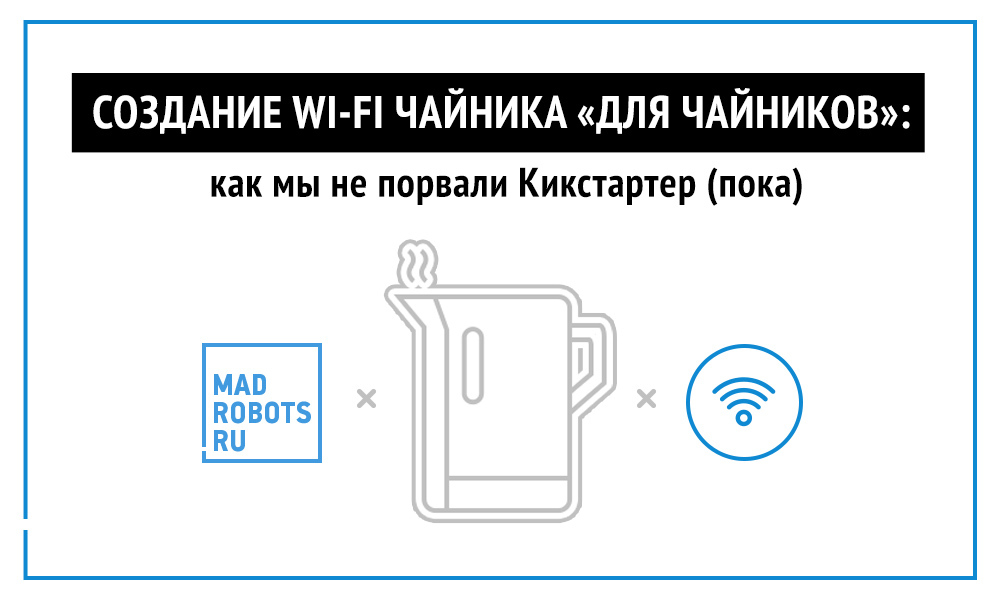
I dreamed not to sell - I dreamed of doing. Create different electronic things that really change people's lives for the better. This dream came to me quite a long time and in many ways defined my professional path. For many years she waited in the wings. And the time came when I created Madrobots .
For some, it was just another online store with cool stuff. For me - a chance to realize the dream. Having created a powerful marketing channel for selling gadgets from the world of the Internet of Things, I dreamed I would be able to start manufacturing them myself, first in Russia and then around the world.
')
Crowdfunding opened the way for non-burdened inventors. While corporations were making their televisions and coffee makers "even better," American crowdfunds gave Pebble, Alpha Mio, 3doodler, and other cool things to the world.
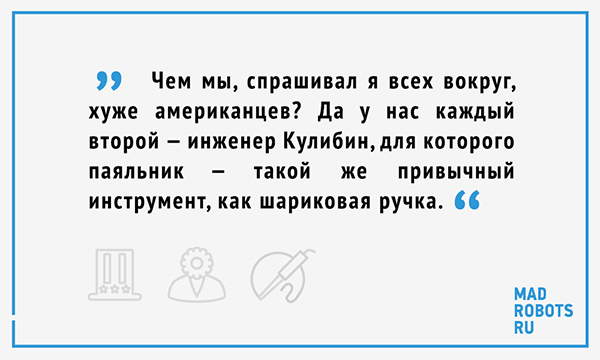
And China, where all these innovations are produced, is even closer to us. What prevents, I said, to do the same thing that the Americans are doing?
What prevents us, I learned when I took up the development of a Wi-Fi kettle, which was supposed to conquer the world and become the first Madrobots project to break the Kickstarter.
BIRTH OF LIFE
I will not exaggerate at all if I say that the Wi-Fi project of the teapot self-generated on the Habré. Although not without the participation of the popular habraiser vvzvlad (in the world - Vlad Zaitsev).
Vlad then lived in Vladivostok and worked as a jack of all trades at a local event agency, and in his spare time was keen on studying various nontrivial glands. He was also at the head of Box Overview - the team of bloggers who did reviews of various electronics on Habré.
Somehow he undertook to study the possibilities of Texas Instruments' debugging boards and wrote a post about how to use it to turn on and off the mains voltage through a web application, and thus control any electronic device - well, for example, a kettle.
Wrote - and forgot. Eight months later, a stranger from Moscow contacted Vlad and suggested that he develop a “smart” kettle that could be switched on remotely from a smartphone - say, when it is too lazy to get out of bed and wait until the water boils.
From such an offer, as Vlad later recalled, he just went nuts: it was, of course, interesting to make a teapot and go to work in Moscow. The investor promised to set up a laboratory, rent a house ...
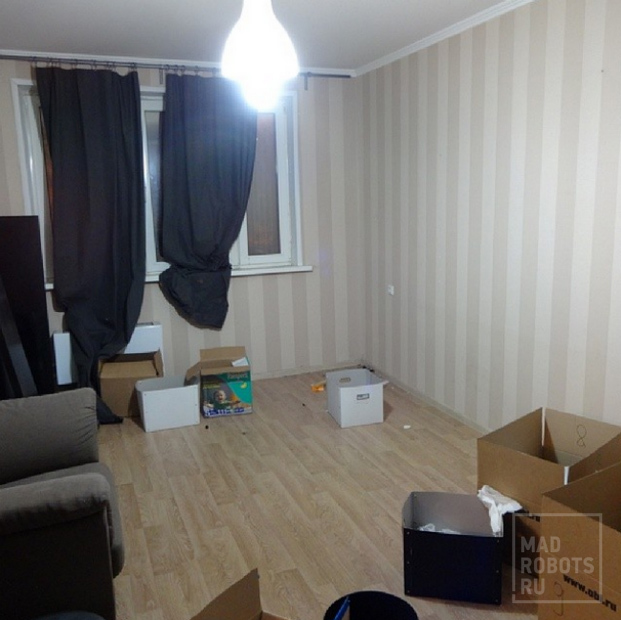
The apartment where the first prototype Wi-Fi kettle was developed.
True, the proposal had some obvious drawbacks: Vlad just recently got married, raised a small child, settled in a new apartment in Vladivostok ... And now it was necessary to take off. Who knows how serious an investor is and whether he will grow cold in a couple of months to the idea?

It was both good and bad. It was good that in two months he still had not lost interest in the project. It is bad that he was burning with his idea, therefore he took a direct part in the work.
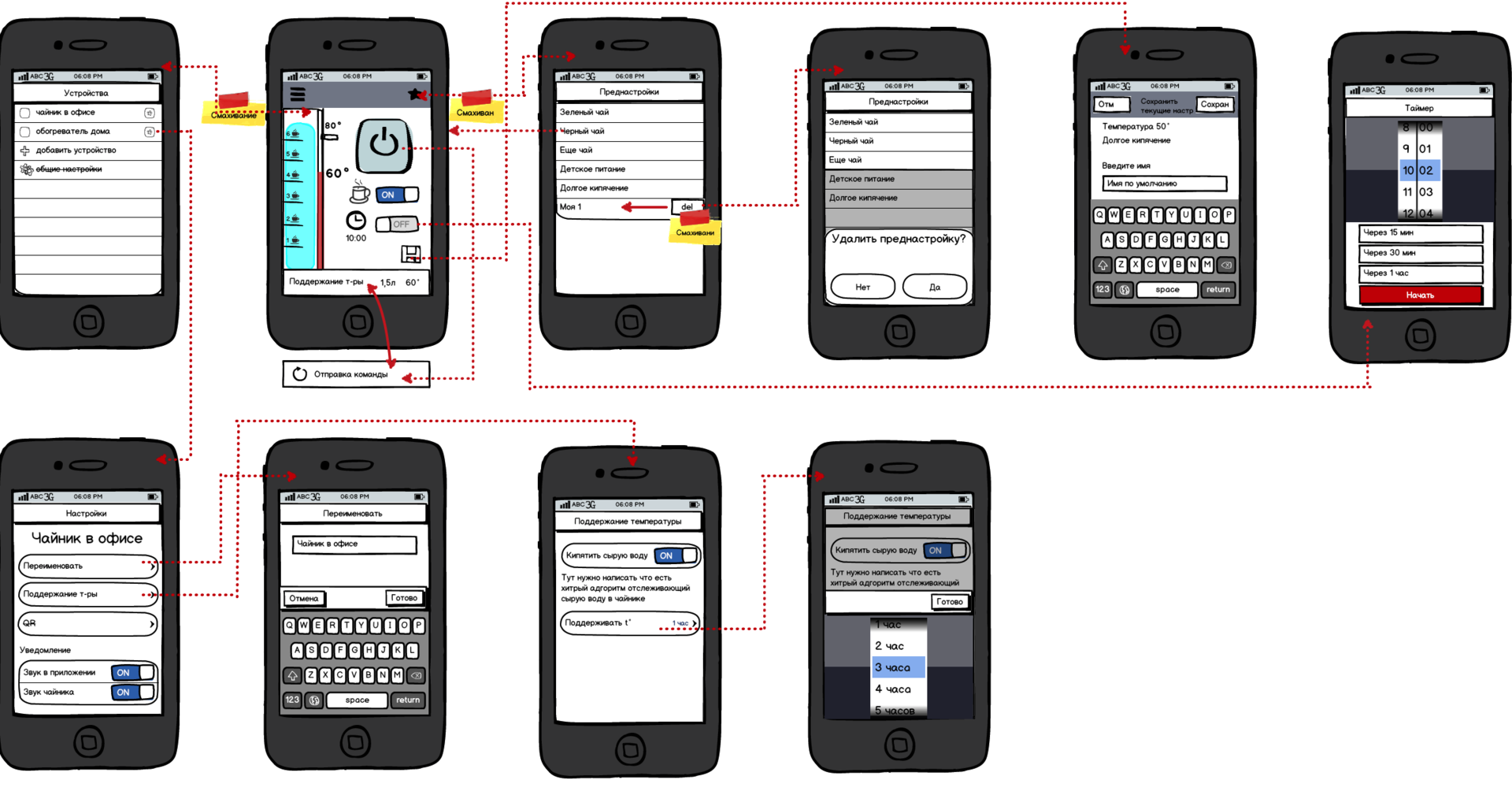
Prototypes of kettle control application screens
As a result, inventors, as Vlad recalled, took a lot of time to argue about minor issues (how the button should look in the smartphone application and how many presets for different types of tea should be).

Mobile app design
Disputes - it's good if they are in the case. And if not, then they just burn the money that you have to pay for the rent of the laboratory (they equipped a two-room apartment for it).
It took six months to create a prototype, design, technical description, test version of the application, as well as refinement of various details. Even the implementation of such a seemingly simple idea, like a Wi-Fi maker (it’s not Pebble after all), in fact turned out to be a daunting task. Especially if you set yourself a goal to give the user full control over the temperature of the water.
For example, it was necessary to take into account that after turning off the heating element, it continues to give off heat - therefore, by turning off the power at 45 degrees, in reality, you will receive water with a temperature of 55 degrees. So, you need to create a system of amendments for different volumes of water and enter it into the system.
Since the inventors wanted to create the perfect product, there were quite a few such details that needed to be thought of. Nevertheless, everything went relatively well - until Elvira Nabiullina was appointed head of the Central Bank.
ELVIRA AND KETTLE
At the end of last year, the Central Bank, under the leadership of Nabiullina, began clearing the financial market of banks that were engaged in cashing and other dubious operations.
And then the kettle? He became the collateral victim of this great political process. The investor kept the money in the bank, which turned out to be one of the victims of the stripping. Man lost a lot. To close the debts, he had to sell one of his businesses.
As luck would have it, at the same time, problems began in another enterprise: a huge warehouse was burnt down, in which the old automobile rubber stored for processing was stored.
She burned for a long time. Vlad recalled that a few days later acrid smoke was still rising over the remains of the warehouse.
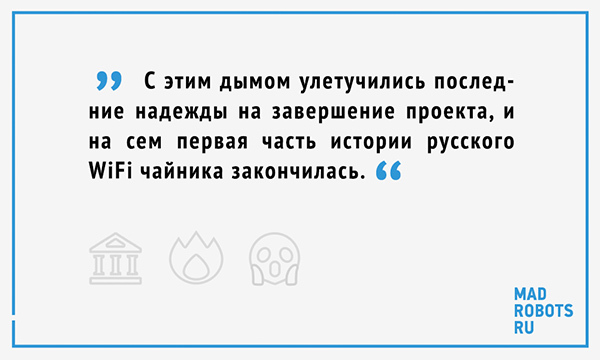
The money ran out, the investor spread his hands. Vlad had to collect things and return home - or look for a new job in Moscow.
By the time we were already familiar with him and maintained a relationship. I liked the way Vlad wrote, and we began to correspond, even when he was still living in Vladivostok.
Of course, I was interested in the fate of the kettle, and I, as a devoted fan, followed the project. Shortly before the collapse, we even met the first investor to discuss possible ways of cooperation, but we could not agree on anything.
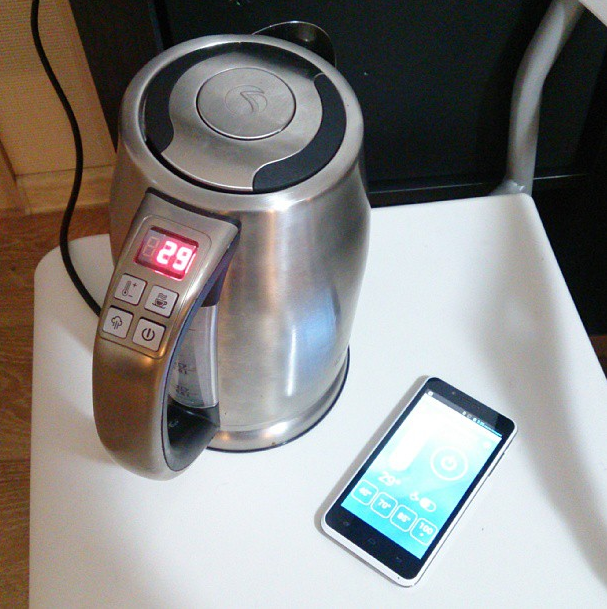
Prototype wi-fi kettle based on a Vitek kettle
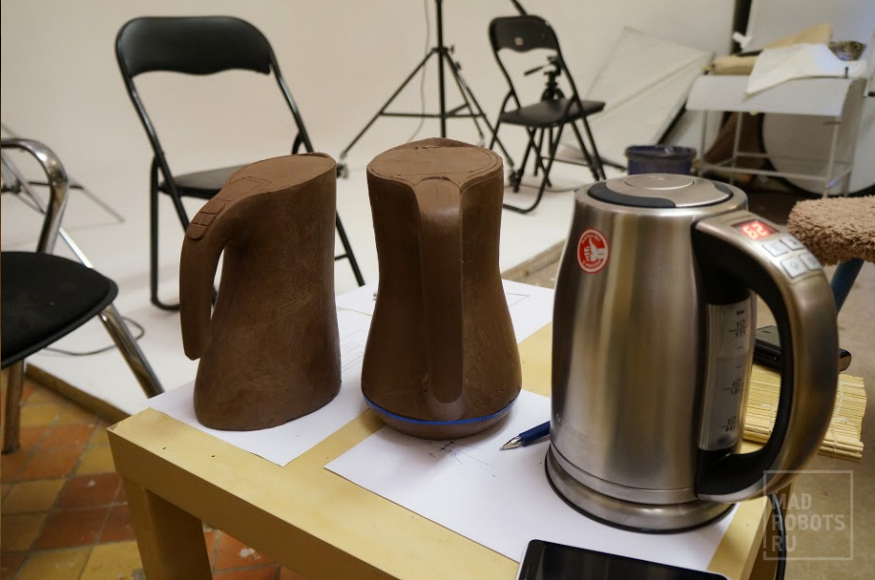
Design of the kettle, developed together with the investor
At the meeting, I asked them uncomfortable questions about the possibilities of the kettle and its future promotion in the market. And, obviously, made a bad impression on the investor.
As Vlad told me later, after the meeting he said about me: “Some Nikolai is strange, he does not want to make a kettle, he wants to sell it”. It seemed to me, on the contrary, that the guys were guided by their own taste, and not by the needs of the people, completely ignoring the market.
Naturally, having learned about the difficulties of the investor, I immediately began to think how to save the project and thus get closer to the realization of my dream. I already quit Panasonic, developed Madrobots, things were going uphill, which overwhelmed me with enthusiasm.
But I didn’t sell auto parts, and I didn’t deal with waste processing, and our business just started to get on its feet, so I couldn’t take Vlad into the team just like that. I needed to invent him a job that would pay back his salary so that he could devote part of his time to finalizing the teapot.
By a happy coincidence of circumstances - and again thanks to “Habra” - such work came up, almost by itself. In the spring I finally had the opportunity to open my own laboratory under the wing of Madrobots. Thanks to our irrepressible blogging activity, we received a commercial offer from Mail.ru to participate in the opening of a technopark in Baumanka .
To prepare - to assemble a chocolate printer or an air hockey robot - without such a person as Vlad, such a project was simply not enough. I saw a perspective on the technology show market. Therefore, he suggested that Vlad finish the development of a smart kettle under the wing of Madrobots.
So the Russian Wi-Fi kettle got a second life.
SAME, BUT BETTER
Rested Vlad with new forces took up work. He made the second prototype and undertook to debug various details, improving the first development and making changes to the design. I, in turn, took up the marketing part.
My predecessor in the development of functionality focused on their ideas about the beautiful. He designed such a teapot design that no one liked except himself.
Once again the first version of the design of the kettle
I also wanted to make the kettle as attractive as possible for the market. So the idea came not only to change the design, but also to make the kettle really “smart” - to install in it, for example, a water quality sensor.
On the development of this issue Vlad took several weeks. Already then it became clear that the scheme invented by me has many flaws. To pay back his salary, Vlad had to spend most of his time not on the teapot, but on other duties at Madrobots. They brought us money, but did not bring us to the triumph on Kickstarter.
As a result, this idea of water quality analysis had to be abandoned, although it seemed to me very profitable in terms of marketing. Such a sensor increased the price of the kettle by half. And I did not want to raise it.
I was fascinated by this picture: here is the store shelf, here is an ordinary Bork teapot on it, and ours is next, which looks no worse, but costs the same. And he is also smart, with Wi-Fi inside. How can you resist?
Just six months ago, I really believed that making a smart kettle at a comparable price is quite realistic. After all, even companies such as Bork, although they sell a lot of teapots, but each model is not ordered in such large quantities.
So, I dreamed, we can quite compete with them. The fee is not so expensive. A small but dynamic company may well bypass the hulking monster.
However, the further we moved, the more we understood how naive our ideas were about how and what is being done in this market.
Vlad spent considerable efforts to develop the design of the teapot: he found a designer who made a three-dimensional model, prepared the documentation, on the basis of which the design bureau could “cut” the teapot into parts ...
It turned out that all these efforts were spent in vain. To release the kettle in your design, you need to order your own molds. And this pleasure will cost you extra three hundred thousand dollars.

For a startup like Madrobots, this is very serious money. In addition, the extra investment will have to be laid in the price of the kettle. And any increase in the retail price reduces possible sales.
There would be smarter developers, would go another way. No one usually makes their design for a party of ten thousand pieces. Why, if there are many already made options, from which you can simply choose the right one?
Like most inventors, when assessing the prospects for the project, I initially did not understand that the costs of the project are always greatly underestimated - just like the upcoming Olympic construction projects or estimates for the repair of an apartment.
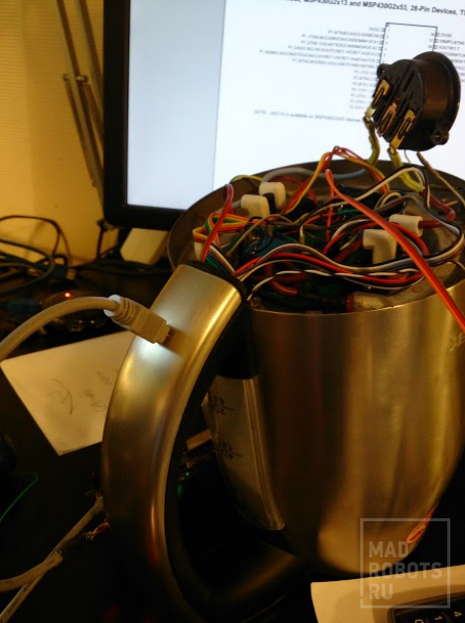
KICKSTARTER
But these difficulties, probably, would not have undermined my confidence in my own strength, if at the same time, thanks to the development of Madrobots, I did not get the opportunity to talk with successful Kickstarter stars and look behind the scenes of crowdfunding.
The legend sounds extremely attractive, we all know it: come up with a cool idea, work through its implementation, start the campaign - and collect the money. No need to sell your apartment, no need to beg for money from business angels and venture investors - this is it, an innovator's paradise.
In fact, in order to really raise serious money, simply a beautiful idea and a convincing presentation are not enough. We also need serious support for parties, media and venture financing.
Most people who succeed at Kickstarter are integrated into the American venture capital environment. They know opinion leaders, influential journalists and bloggers who help them promote a project.
Without this, to achieve serious success is difficult. Sitting in Russia and having no connections in the Valley, "Kickstarter" will not break. A miracle, of course, can happen. But, investing hundreds of thousands of dollars, I don’t feel like relying on a miracle.
At the same time, to get a chance for a miracle, you need to spend a lot of time. Pebble was launched on Kickstarter in 2012, and if you don’t get into the details, you can imagine that the project is two or three years old. But before “Kickstarter” there were business angels, before business angels there were Y Combinator seed investments.
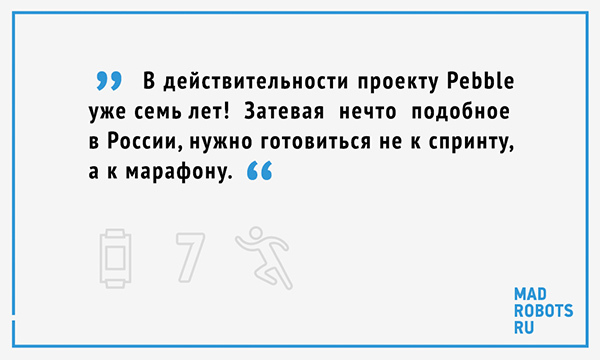
And over the years, you can easily get around competitors. While the Russian Wi-Fi maker was being developed, the British company Smarter Applications announced its gadget . His release was transferred many times, but this year it finally came out and began to be sold in the English Amazon.

The functionality of this kettle is poorer than ours. You can only choose between four temperatures. In fact, this is an ordinary electric kettle, only with remote control.
We still do not have a remote teapot, but a smart one: the user can set any temperature (for different types of tea she needs her own) and any work schedule.
But where is the guarantee that British competitors are not working on a new version, in which our ideas will be implemented? They have already gone all the way to the end - to the idea to the shelf - which means they understand better how everything works - how to make not only a prototype, but also to put it into the series.
iKettle scold for terrible glitches, the complexity of setting up and poor opportunities. But this kettle has a big advantage over ours. It is already for sale. And ours yet.
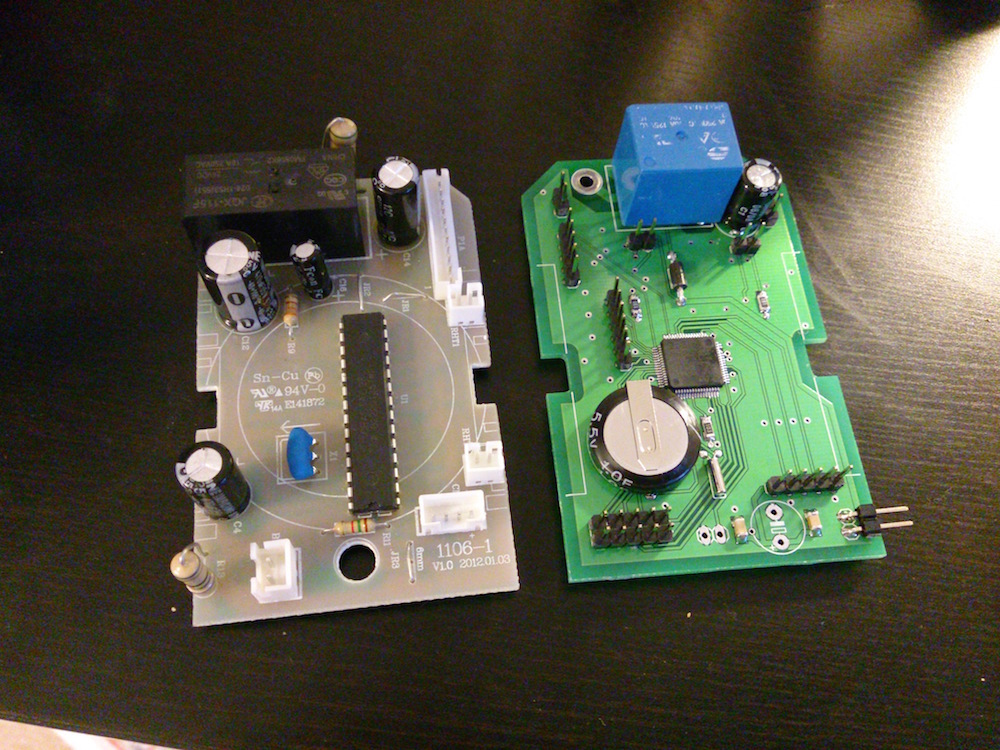
KETTLE OR LIFE
And whether it will be on sale, I do not know any more.
I believe that all problems can be overcome. After all, it was precisely due to some romantic naivety, lack of understanding of all difficulties and self-confidence that most successful companies created by business visionaries came into being.
Finding a way to join the American get-together is difficult - but you can still figure out how to do it. And this means that attracting money is a solvable problem.
Yes, and not only by crowdfunding is the venture capital market alive: there are many investors in Russia who are not averse to investing extra money in something brain-consuming. And for two teapots with wi-fi in the world market there is definitely a place.
But I understand that in order to engage in such projects and make them successful, I need to dive into them with my head.
My main task is to ensure sustainable growth of our online store against the background of a stagnating, if not collapsing economy. And every minute I don’t think about this task, I reduce my chances of success.
Developing innovative things is great. But this is a risky business, the return on which will come in many years.
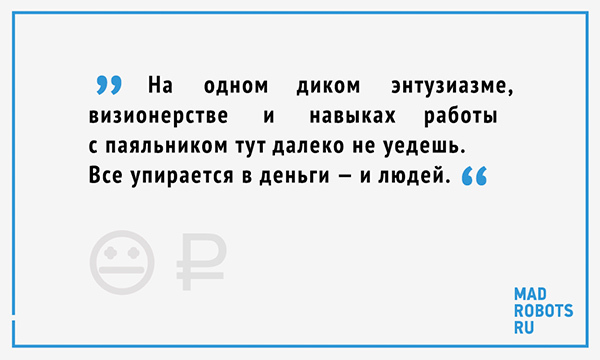
Even more, probably, in people. Vlad is a talented engineer, unlike other Russian craftsmen, he is interested not only in high technologies, but also in their commercial application. But even he is not able to simultaneously shoulder the marketing, finance and production of such a complex project.
Moreover, perfectionism greatly hinders him: he wants to do the perfect thing - or not to do anything. But even the first iPhone was far from ideal, and the market needs not an ideal, but just a good enough thing for which people would be willing to pay.
To implement such a project, we need the competencies of an experienced manager who would understand the topic, possess the necessary entrepreneurial qualities and minimal technical competence, and at the same time have the desire and the ability to tie their fate with a teapot and crowdfunding for years.
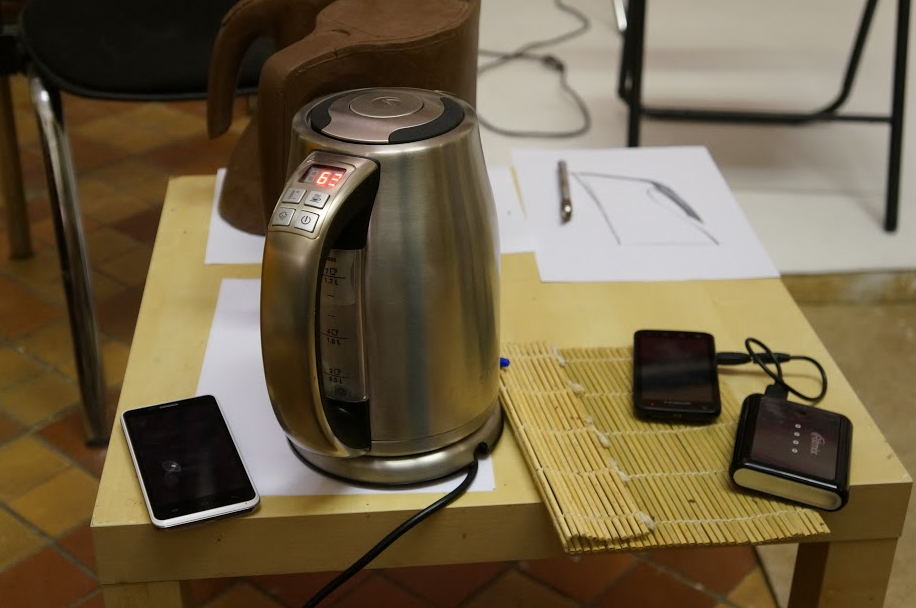
First, I asked the question: what is stopping us, Russians, from seizing Kickstarter and other crowdfunding platforms? I think we are primarily hampered by the absence of such people.
Like many who dream of doing their own innovative things in Russia, I had many illusions.
It seemed to me that a good idea and some super efforts would ensure success. Everything is much more complicated.
To succeed, you need a deep, not superficial knowledge of the market. We need a reinforced concrete idea that your faster competitors from America or Europe do not realize the day after tomorrow.
We need serious capital that will allow us to work on the implementation of the idea twenty-four hours a day. It is necessary to understand how production is arranged, and how it affects the economy and business model. We need good connections that will help in promoting the product to the world market.
But the main thing that is needed is the realization that the idea and prototype is only the tenth, if not the hundredth, part of the way. Six months ago, I did not realize this. Therefore, my dream is still a dream. Although she was half a step closer.

PS While I was writing this text, the teapot project reached the semi-finals of the Eureka contest, organized by the Innopraktik center, the business incubator of Moscow State University and Gazprombank. Total submitted about 600 applications. 25. The main prize of the competition - 500,000 rubles, support for scientists and access to investors. It is in words. How will in fact, find out when (and if) we reach the final.
Previous parts of the history of Madrobots can be read at the links:
Part 1. As Madrobots was coined.
Part 2. How we tried to trade iPhones and almost went broke on that.
Part 3. How we played big in Vegas and brought a couple of dozen new devices from CES 2014.
Part 4. How we opened the first Madrobots store in the Gorbushka shopping center.
Part 5. The first video review Madrobots.
Part 6. How we decided to open the Madrobots store in the MEGA Belaya Dacha shopping center.




 .
.






Source: https://habr.com/ru/post/242811/
All Articles